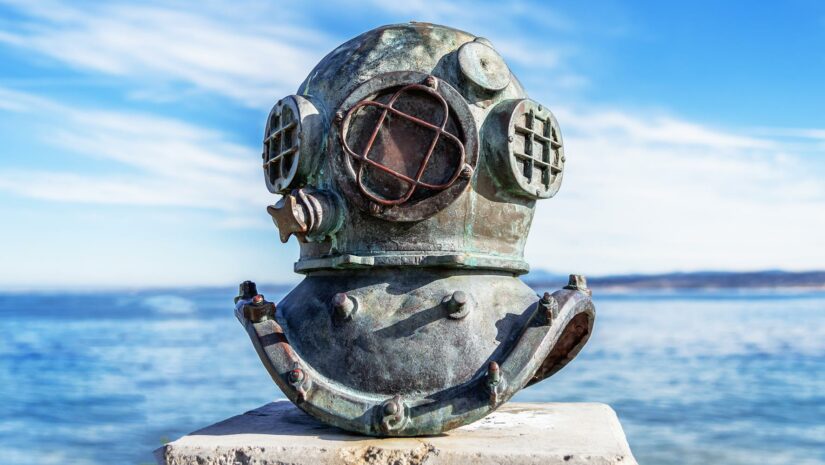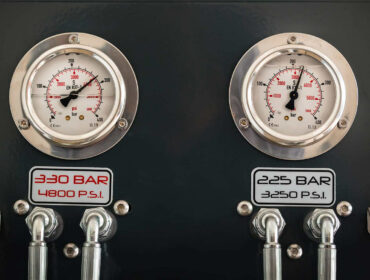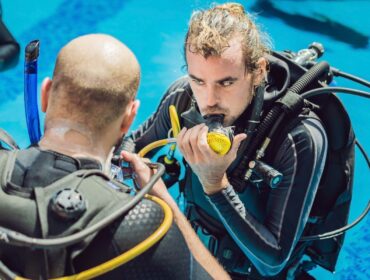Scuba diving is a sport that had its humble beginnings in ancient times. In early Greece and Rome, people used to swim or dive while holding their breath or by using makeshift breathing apparatuses like hollow plant stems. This was commonly practiced during combat or while gathering food and materials from the ocean.
We have come a long way since then. Underwater diving evolved from simple freediving or skin diving to the more sophisticated form that we know today thanks to contributions from many great minds throughout the centuries.
Modern scuba diving is built on thousands of years’ worth of innovations in underwater technology—not to mention all of the physiological research on the effects of underwater pressure on the human body and the efforts to create standardized training programs for amateur divers. Now, let’s look at a quick summary of what scientists and experts had to explore, research, and invent to make scuba diving what it is today.
Scuba Diving: Historical Highlights
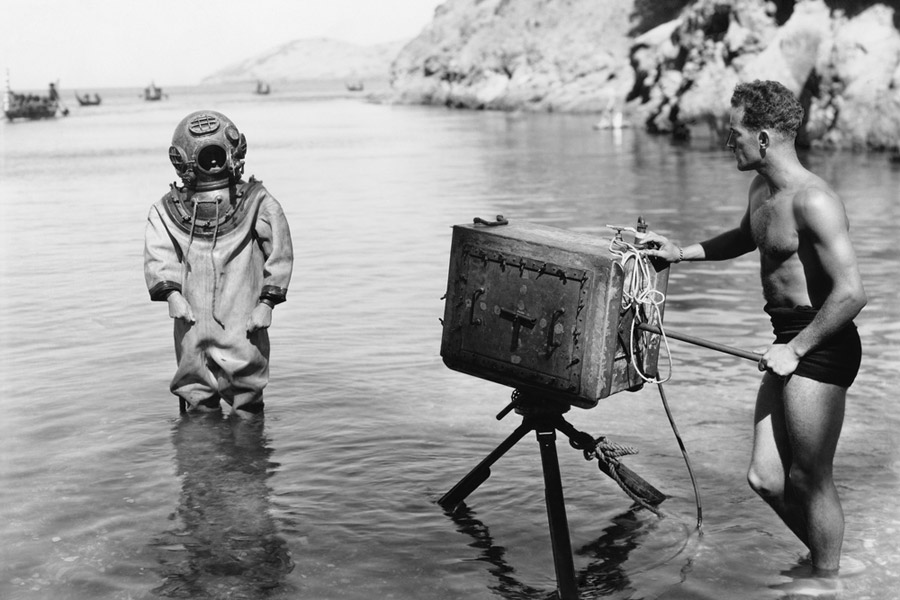
Human Instinct
Freediving is as ancient an activity as humanity itself. In fact, it’s what eventually established the art of scuba diving. More than any other sport, freediving is based on old subconscious reflexes in human beings.
For the first nine months of our lives, we humans exist in an aquatic environment very similar to seawater. If an infant is submerged underwater, it instinctively holds its breath for up to 40 seconds while making swimming motions, although we seem to lose this ability as we get older and commence walking. Awakening these reflexes is one of the most important elements of freediving, thus giving humans better abilities to be survive at great depths.
“Apnea”
The word Apnea derives from the Greek word “a-pnoia,” which literally means “without breathing.” The origin of this word doesn’t have any connection to water, but in modern athletic terminology, “apnea” has become a synonym for freediving. When used in the context of this sport, “apnea” means diving on a single breath of air without using equipment that make it possible to breathe underwater.
Early Diving Equipment
The first snorkel used by ancient swimmers were hollow reeds that allowed them to breathe underwater. A particularly popular instance of this being used successfully was when a Greek sculptor named Scyllis was captured by Persians and taken prisoner on one of their ships, and he escaped and swam nine miles to rejoin his countrymen with the help of a hollow reed as a makeshift snorkel.
Greek philosopher Aristotle recorded the first use of “diving bells” in 4th century BC. They supposedly used cauldrons that were overturned and forced into the water so that it retained usable air for the diver. This rudimentary “technology” again resurfaced in the 16th century, when people started using primitive diving bells in the form of a wooden barrel. These were held stationary a few feet from the surface with its bottom open to water and its top portion containing air compressed by water pressure. A diver standing upright would have his head in the diving bell. He could leave it for a minute or two to collect sponges or explore the bottom, and then return for a short while until air in the bell was no longer breathable.
It’s also worth noting that sometime in the 13th century, Persian divers started making eye goggles by thinly slicing and polishing tortoise shells.
In 16th century England and France, full diving suits made of leather were used to dive at depths of up to 60 feet. Air was pumped down from the surface with the aid of manual pumps. Soon, helmets were made of metal to withstand even greater water pressure, allowing divers to go deeper.
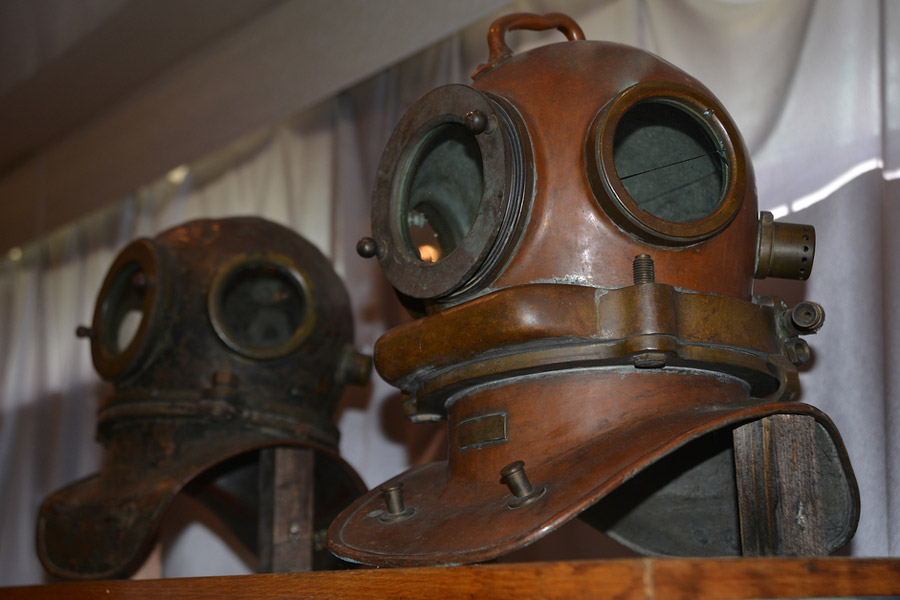
Extended Breathing
British engineer John Smeaton developed the air pump in 1771. It allowed air to be pumped to the diver by being connected to a hose, which was in turn connected to a diving barrel. The following year, Frenchman Sieur Freminet created a rebreathing device that allowed the diver to recycle inhaled air from inside the diving barrel. Unfortunately, despite being the first self-contained air device, its lack of research and development led to his death due to lack of oxygen after using the device for twenty minutes.
In 1825, English inventor William James supported Smeaton’s research by designing another self-contained breather, which consisted of a cylindrical iron “belt” that held just enough air (about 450 psi) for a seven-minute dive and was attached to a copper helmet. By the 1830s, the surface-supplied air helmet was perfected well enough to allow extensive salvage work.
A few decades later, in 1876, Englishman Henry Fleuss invented a closed circuit oxygen rebreather. While it was originally intended for use in the repair of an iron door in a flooded ship, he then tried using it for a 30-foot dive underwater. Like James, Fleuss died from the experiment—this time from oxygen toxicity.
Diving Suit Innovations
Soon before the closed circuit oxygen rebreather was invented, the rigid diving suit was developed by Benoît Rouquayrol and Auguste Denayrouze in 1873. The suit weighed about 200 pounds and offered a safer air supply.
Many years later, in 1921, famed magician and escape artist Harry Houdini invented a diver’s suit. Called the Houdini suit, it was inspired by his fascination with escape stunts and allowed divers to quickly and safely get out of it while underwater.
Modern Research and Equipment
Starting in the 19th century, two main avenues of investigation—one scientific, the other technological—greatly accelerated underwater exploration. Scientific research was advanced by the work of Paul Bert and John Scott Haldane, from France and Scotland respectively. Their studies helped explain the effects of water pressure on the body, and also define safe limits for compressed air diving. At the same time, improvements in technology, including compressed air pumps, carbon dioxide scrubbers, and regulators, made it possible for people to stay underwater for longer periods of time.
In 1942, French engineer Emile Gagnan and French navy officer Jacques Cousteau co-invented an improved autonomous diving suit and a modern diving regulator that released fresh air on demand. The following year, they began selling the famous Aqua-Lung.
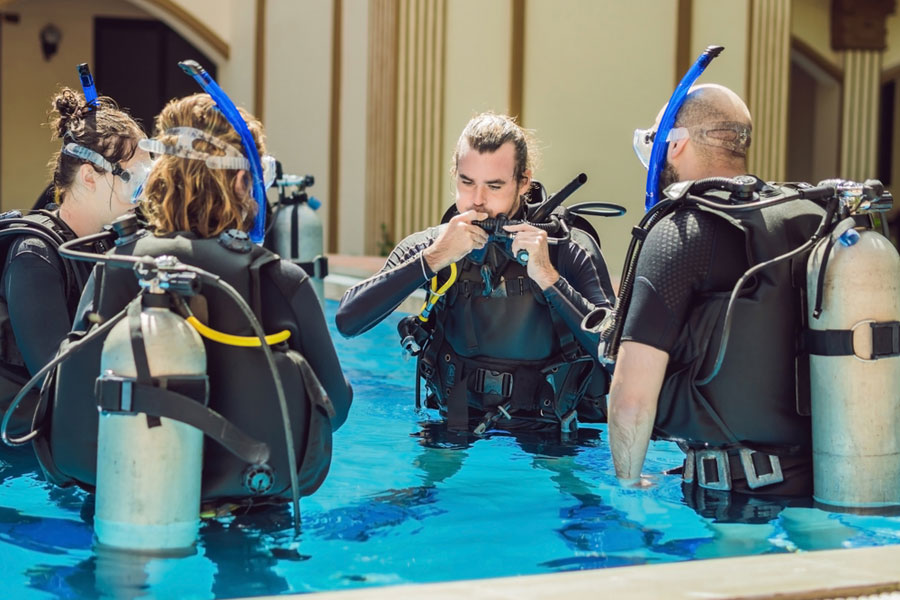
Scuba Diving as a Sport and Recreation
Scuba diving transcended its military and exploratory origins to become a beloved recreational activity. Divers cherished the tranquility of underwater environments and the opportunity to observe marine life up close. As diving grew in popularity, dive resorts and tourism flourished, offering tailored experiences for divers of all levels.
Scientific and Professional Applications
Scuba diving’s utility expanded beyond recreation. Marine biologists utilized diving as a tool for underwater research, unlocking the secrets of the ocean’s ecosystems. Additionally, military and law enforcement divers harnessed scuba for various missions, from salvage operations to underwater reconnaissance.
Environmental Impact and Conservation Efforts
With the rise in scuba diving came concerns about its ecological impact. Divers witnessed firsthand the deterioration of coral reefs and marine habitats. In response, conservation efforts aimed at protecting fragile ecosystems gained momentum. Responsible diving practices, such as buoyancy control and avoiding contact with marine life, became essential to preserving underwater wonders for future generations.
Scuba Diving Today
Nowadays, over a handful of things make up the essential list of scuba diving equipment, each designed and improved over and over again to keep both recreational and professional divers safe and to help ensure efficient underwater operations.
Scuba diving has come a long way since it evolved from freediving centuries ago, but it’s still one of the most beloved and adventurous recreational activities of all time.
Conclusion
The history of scuba diving reflects humanity’s relentless pursuit of understanding and connecting with the natural world. From ancient breath-hold practices to the futuristic gear of today, scuba diving has evolved into a remarkable endeavor. As we move forward, let us cherish this unique gift, mindful of our impact on the underwater realm, and endeavor to preserve its splendor for generations to come. The call of the deep beckons us—let us answer with reverence and awe.

